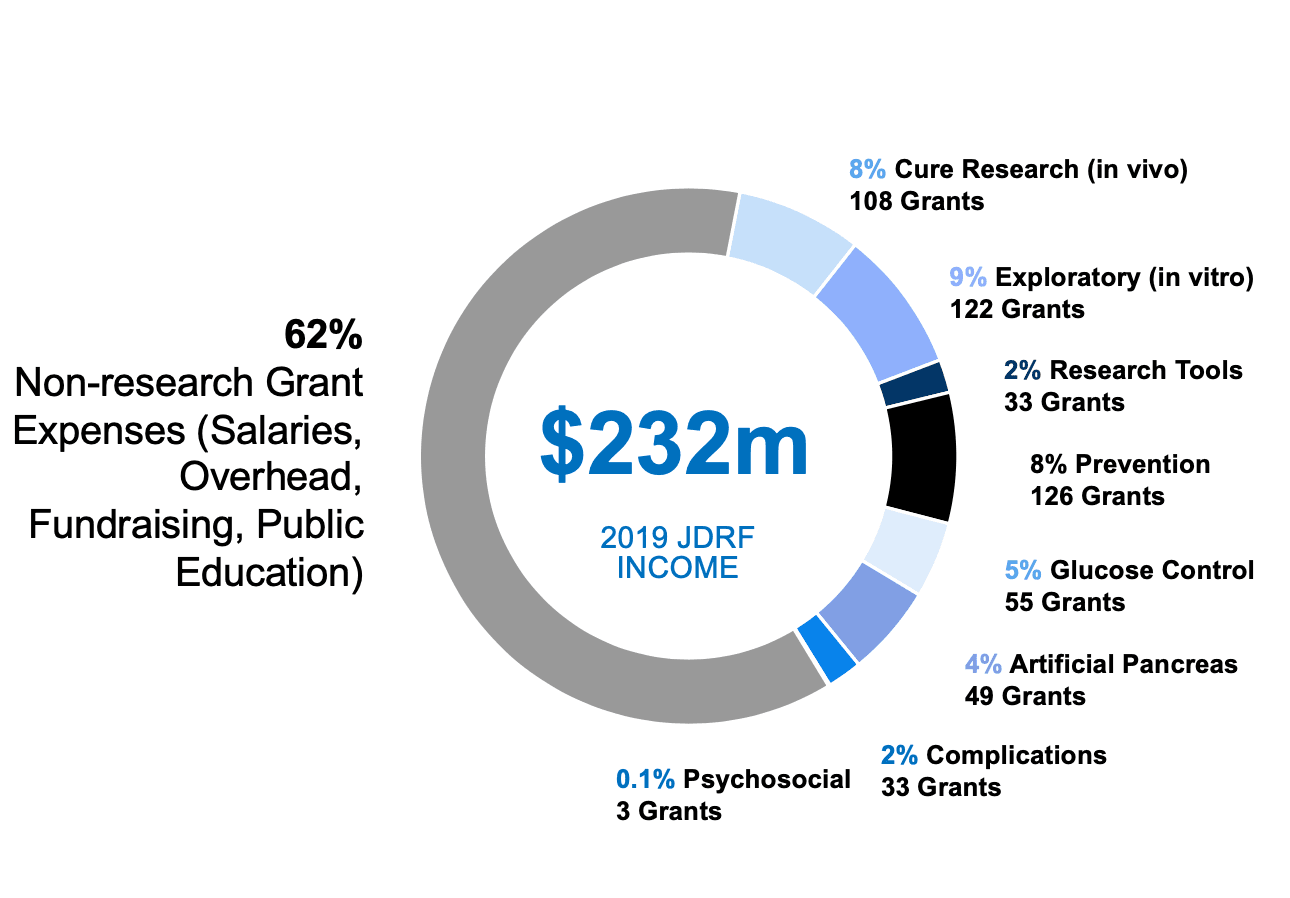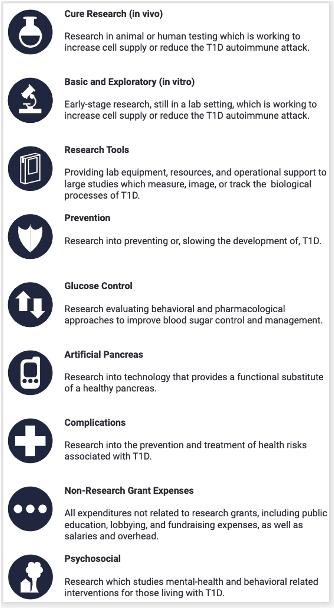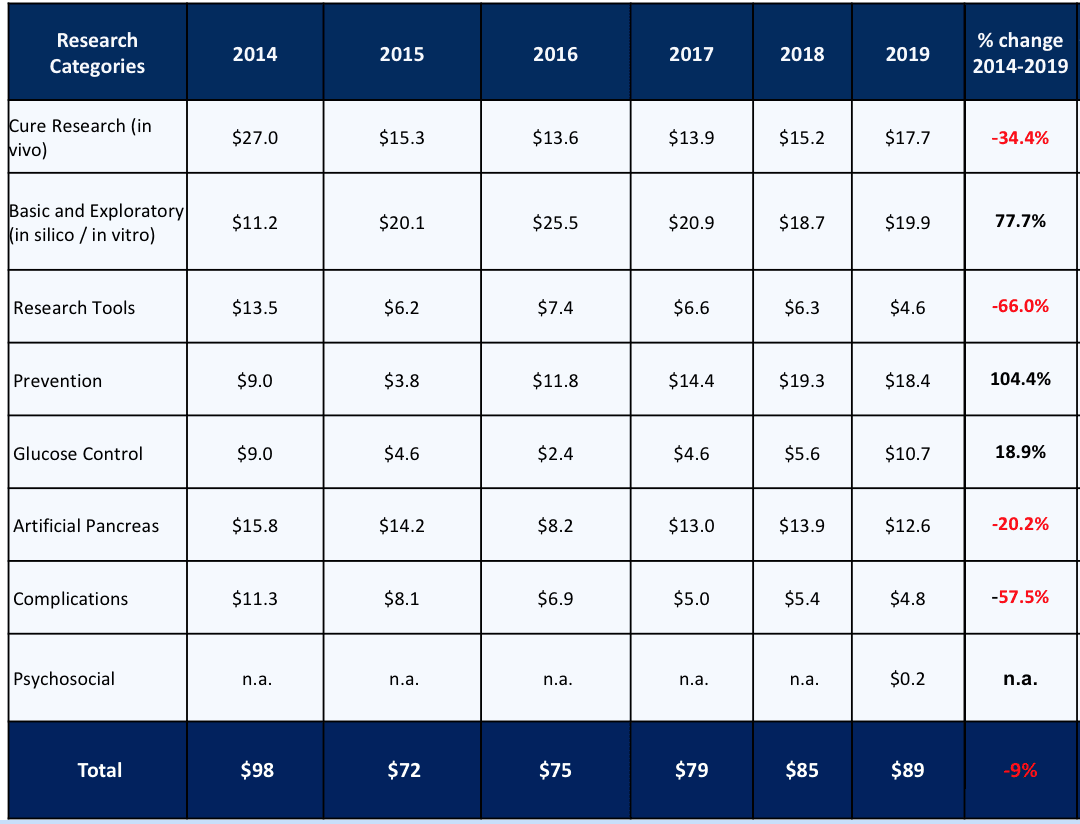
This report provides an analysis of grants given by JDRF during FY (Fiscal Year) 2019 alongside historical trend data since 2014. In the last five years, JDRF has decreased the amount of funding that goes to research progressed enough to be testing in humans or animals (“in-vivo”). In 2019, JDRF only funded two Practical Cure research grants.
Key Points:
- 38% of JDRF's total 2019 income ($232m) was used to fund research grants. See opening chart.
- 8% of JDRF income was used to fund in-vivo research, down from 12% in 2014. For category definitions, see Appendix A.
- In 2019, JDRF allocated more funding to basic/exploratory research than to any other category. See Appendix B.
- The amount of money JDRF allocated to prevention research more than doubled since 2014. See Appendix B.
- JDRF spread $89m over 529 grants in 2019, compared to $98m over 387 grants in 2014. The drastic decrease in dollars given per grant indicates a decrease in focus. See Appendix C.
- JDRF funded two Practical Cure Projects, fewer than prior years.
- ViaCyte ($1m): A human trial testing the safety and efficacy of implanting stem cell-derived beta cells within an immunoprotective encapsulation device into patients with T1D.
- Benaroya ($250K): Two human trials that try to “wake” up dysfunctional beta cells in people with longstanding T1D who are not making any insulin but still have beta cells present.
Implications:
During the past five years, the JDRF research funding strategy appears to have become much less focused. Less money is being spent on more projects than five years ago. It is worth noting that there was a leadership shift at JDRF and these numbers reflect the legacy of the prior administration. The new CEO has verbally committed to laying out a clear research roadmap towards a functional cure and we look forward to seeing that reflected in next year’s analysis.
The one research area that is clearly receiving more attention is prevention. While it would be wonderful to have a solution that prevents T1D for all future generations, such a solution would not improve the quality of life with people living with the disease.
Appendix A: Research Grant Categories Defined

Appendix B: JDRF Grant Spending by Category since 2014 (in millions)

Appendix C: JDRF Grants by Category since 2014

